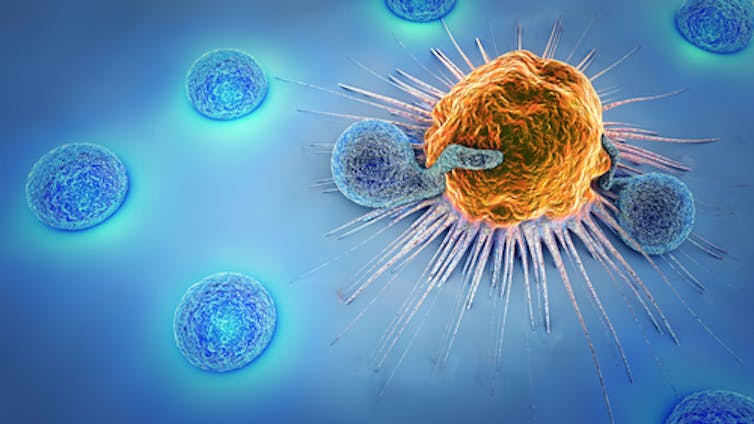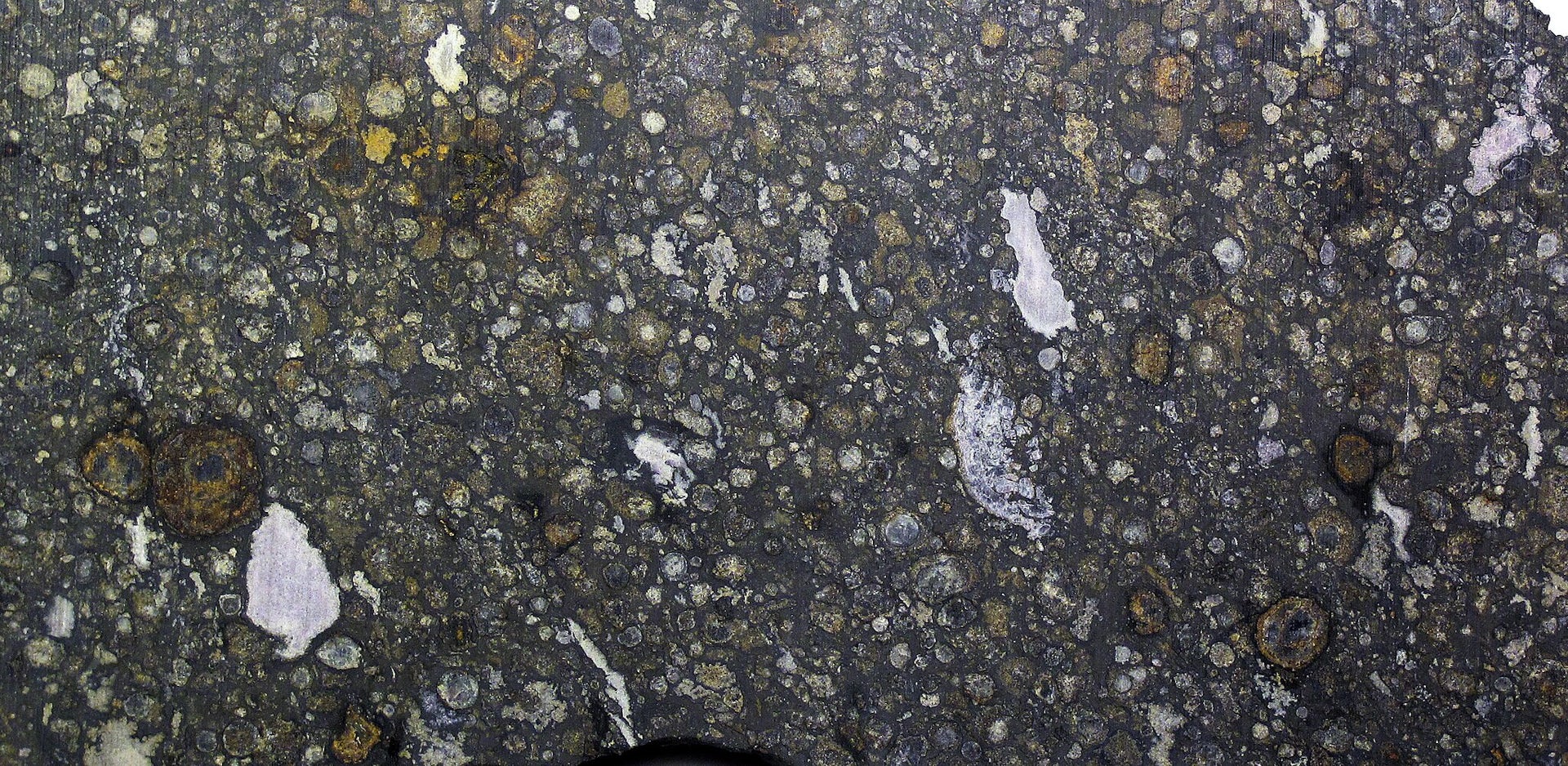A new clue into treatments for triple negative breast cancer, a mean disease
Researchers have long been looking for clues into how to treat triple negative breast cancer. Could fighter blood cells that infiltrate the tumor provide insight?

When a woman finds a lump in her breast, her doctor’s first move is usually to recommend a biopsy – that is, to remove a small portion of the lump for analysis. If the lump is cancerous, doctors test for three different clinical markers: estrogen receptor, progesterone receptor and human epidermal growth factor receptor. The results determine what kind of hormone or growth factor receptor treatment the patient receives.
About 15-20 percent of breast cancers, though, don’t test positive for any of the three markers. They’re called triple negative breast cancers, and they’re big trouble. Treatments developed for cancers that test positive for any of the three different markers will not work on triple negative breast cancers.
Triple negative breast cancers are more aggressive and more likely to spread throughout the body.
At the recent International Triple Negative Breast Cancer Conference in Atlanta, I presented findings that show promise of improving treatment and outcomes for some women with the disease, even though more study is needed to confirm my findings.
Moving the focus
The five-year survival rate for women with triple negative breast cancer is lower – 77 percent – than the five-year survival rate – 93 percent – for women whose cancers have one of the three receptors. Also, because there are no hormone-targeted treatments for triple negative breast cancer, women often must endure harsher treatments like radiation and chemotherapy. Black women are about three times more likely than white women to develop triple negative breast cancer, a difference that could be due to their genetics.
Most researchers working on triple negative breast cancers study the tumor themselves. But my research looked at the disease from a different angle – the way the patient’s own body attacks the tumor.
When a woman gets breast cancer, her immune system leaps into gear. Her body sends tumor infiltrating lymphocytes to target and kill the tumor cells.

Researchers and I looked at 103 early-stage patients with triple negative breast cancer, 71 of them African-American and the rest European-American, to see whether there was a difference in tumor-infiltrating lymphocyte count. Tumor-infiltrating lymphocytes were evaluated in hemotoxylin- and eosin-stained tissue sections according to the International TILs Working Group 2014 guidelines by pathologists we collaborate with at Emory University Hospital. We found that the African-Americans had a significantly higher level of tumor infiltrating lymphocytes in early-stage cancer than white women.
We also found higher tumor infiltrating lymphocyte levels in early-stage African-American patients who were diagnosed at a young age or tested negative for a fourth common clinical marker, androgen receptor. African-American women are more likely to be diagnosed with triple negative breast cancer at younger age and lack androgen receptor, factors associated with more aggressive disease, compared to white women.
Maybe most importantly, we found that we could use the level of tumor infiltrating lymphocytes to predict a greater or lower risk of death: The more tumor infiltrating lymphocytes, the better the survival we found among early-stage African-American cancer patients. High levels of tumor infiltrating lymphocytes also seem to correlate with higher levels of DNA damage within the tumor. If this correlation bears out in further research, doctors could use it to predict response to DNA repair therapies for a specific patient.
Finally, our study pointed to the possibility of an exciting new form of treatment: adoptive T cell therapy. In adoptive T cell therapy, doctors extract immune cells from a patient and genetically engineer them to expand the patient’s T cells. The cells are then infused back into the patient to improve her anti-tumor response.
Promise in other cancer types
Adoptive cell therapy has already shown promise in melanoma patients, and it is currently in clinical trials as a treatment option for breast cancer patients. From our research, we already know who might be most likely to respond to the treatment: African-American women, in the early stages of the disease, whose tumor infiltrating lymphocyte count is lower than normal. However, we plan to validate these results in additional patient cohorts.
Triple negative breast cancer is a scary disease – aggressive, rapid-spreading and insusceptible to the hormone treatments we use to target most breast cancers. But our next key to fighting it might not be in the tumor at all. It just might be tumor infiltrating lymphocytes, those tiny anti-cancer warriors our own bodies throw into the fray.
Nikita Wright does not work for, consult, own shares in or receive funding from any company or organization that would benefit from this article, and has disclosed no relevant affiliations beyond their academic appointment.
Read These Next
Sleep problems and depression can be a vicious cycle, especially during pregnancy − here’s why it’s
Inadequate sleep can have negative downstream effects on everyday cognitive functioning and mental health,…
Can scientists detect life without knowing what it looks like? Research using machine learning offer
A new machine learning model explores the boundary between biological and nonbiological chemistry.
How a niche Catholic approach to infertility treatment became a new talking point for MAHA conservat
Mainstream medical organizations have criticized ‘restorative reproductive medicine,’ but some Catholics…





